TI 99/4A
PARSEC
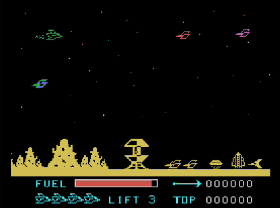
Ladies and Gentlemen. May I present to you a game that was probably the humble TI99/4A's "Killer App". Or it would have been if more people knew about it.
If you like your side scrolling shoot 'em ups, and you like them action packed and with a nice difficulty curve, this one for is you. But it's got a little bit more to it than just shooting, there's strategy in there, and some serious pixel-perfect maneuvering.
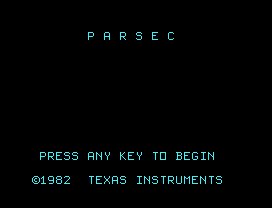
So, let's begin. Get past the "no-frills" title screen (It just says "Parsec", basically. In plain mono-spaced text, no less) and we're hurtling across space in our natty little space ship. You can fly around a little, even crash, just get used to the handling, the game doesn't start until you press fire.
Once you do, you are warned that alien craft are advancing, and then on they come, swooping down one at a time, easy fodder for your laser cannon at this stage. They don't fire back, just hurtle their craft at you, and when they go off the left side of the screen, they reappear on the right. Until they're destroyed, the aliens will fly right to left over and over again, getting faster and faster until they're literally whipping across the screen, making it impossible to hit them. But hit them you must, you have to destroy them all to progress.
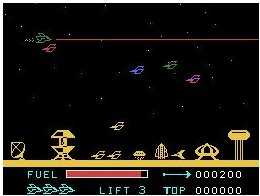
On the first level, these beasties take one shot to die. On level 2, they take 2. And so on, until level 4, after which they just come faster instead.
The next aliens are the Urbites, a craft that fires back at you, and for the first couple of seconds they are invincible. They're quite slow, though, but will move up and down with you, and advance on you when they're level, so you need to kill them before they get too close for you to avoid their shots.
Another wave of aliens (This time it's the "LTFs" that attack you), and then you must face the Dramites. They look just like the Urbites, except they move really fast, fire really fast, and unless you keep on your toes, they'll have you.
Next come more aliens, this time it's the UFOs. The UFOs are sneaky, and attack from behind. Will they come high or low? You don't know until the first one comes out, and you really need to hit them first time to maximise your chances of survival. A tricky wave indeed.
Next are the Bynites. They are like Urbites and Dramites, but advance towards you all the time, firing their cluster-like missiles at you. From level two onwards, they have an extra trick up their sleeve, after the first hit they turn invisible until you destroy them.
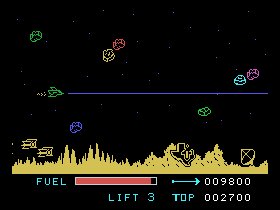
Finally, you face an Asteroid belt, and must destroy a certain number of rocks to begin the next level, where we start all over again.
But that's not the end of it! Not by any stretch of the imagination. You see, you only have a finite amount of fuel, and you must refuel by means of refuelling tunnels that appear whenever your fuel is low. These come in three varieties, the easy short one, the medium not too bad one, and the one that's about 2 minutes long with loads of jagged bits. 2 minutes of pixel perfect maneuvering... that takes it out of you.

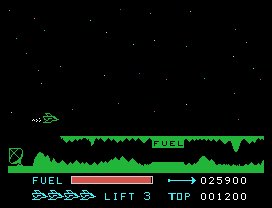
Thankfully, you do have 3 speeds of movement. Known as "Lifts", Lift 1 is the one you'll use for the refuelling tunnels. Lift 2 is medium speed (I never used this, EVER) and Lift 3 is full speed, what you'll be using for the majority of the game.
From level 4 onwards, you begin to get surprise attacks by "Killer Satellites". These little meanies appear with NO warning (you get a little siren and warning text for all the other alien waves), and start tracking and firing at you straight away. If you're not prepared for it, you can get caught out.
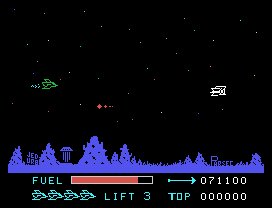
Also, your laser can only be fired for so long before it overheats, destroying you. On Level 1, this is about 6 seconds of continuous fire. From about level 10, one tap on the fire button will start your ship flashing, the warning signal for an imminent overheat.
There's supposedly 16 levels of fast paced action, and I never saw the end. I did have one mammoth session once, reaching level 12, but the combination of speed, laser use restrictions, and general difficulty was too much for me in my tender years. Maybe now I could complete the game, but I would have to get used to those hideous joysticks again... On the other hand, I could use the keyboard, or even the wonders of emulation, but it wouldn't be the same.
I developed a symptom we called "Parsec Leg", which always occurred when the Dramites attacked... the sudden action to avoid their speedy attacks resulted in me involuntarily raising one of my legs in the joystick-twisting frenzy. My family laughed, but I was quite traumatised by it! I'm considering setting up a charity fund for anyone else who was affected by it. I can see the TV adverts now... I just need to sign Michael Winner over to present it.
But I don't care, I'm going to remember Parsec for the quality game it was, and so should the Retro world.
It was an arcade-quality game playable at home. That's difficult to achieve in the modern era of gaming!
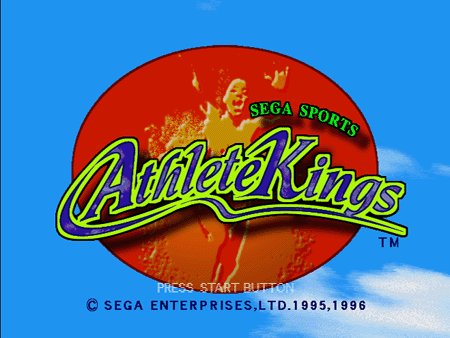
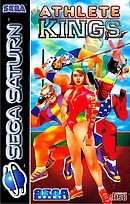
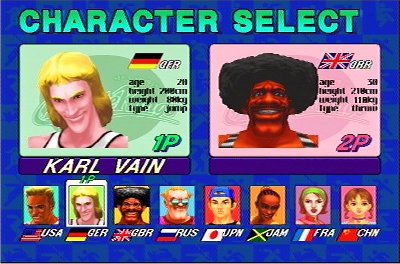 Back in the old days of Arcade action, there was a hugely popular title by the name of “Track and Field”. A simple enough concept, re-enact the energetic exertion of Olympic-standard athletics by means of mashing buttons as fast as you can, attempting to qualify to move on through a sequence of “popular” events.
Back in the old days of Arcade action, there was a hugely popular title by the name of “Track and Field”. A simple enough concept, re-enact the energetic exertion of Olympic-standard athletics by means of mashing buttons as fast as you can, attempting to qualify to move on through a sequence of “popular” events.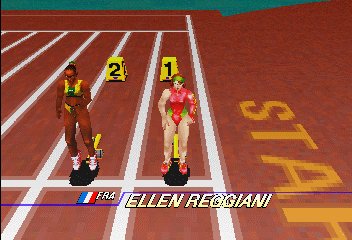
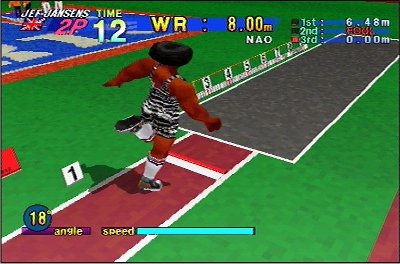
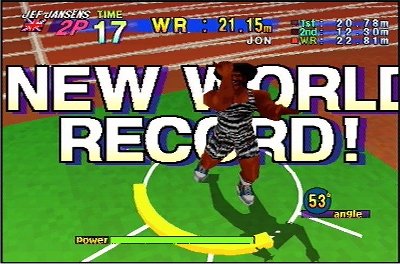
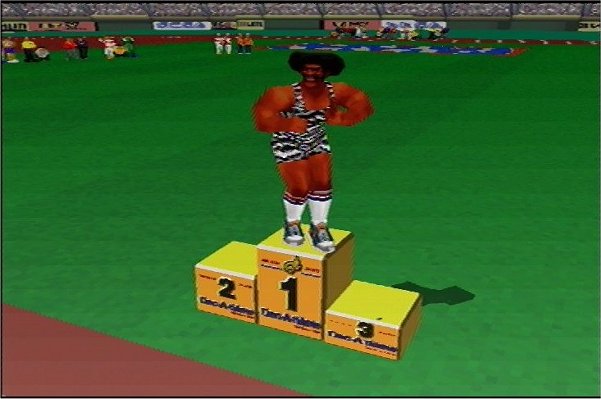
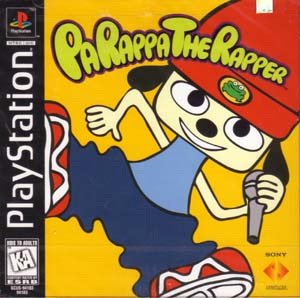
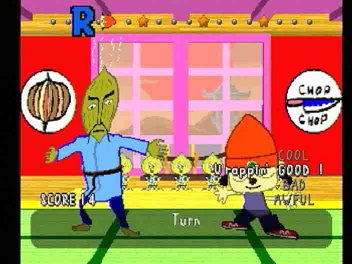
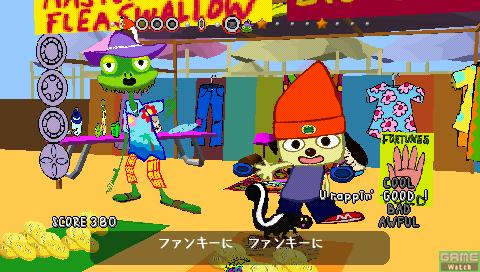 All the tasks are completed by means of rhythmic rapping, usually following the “teacher” on each stage. However, you can progress beyond just being “good” by freestyling a bit, and at this point the teacher actually leaves you to it, just freestyle yourself to massive points, but you’ve got to be impressive with every set of beats you lay down.
All the tasks are completed by means of rhythmic rapping, usually following the “teacher” on each stage. However, you can progress beyond just being “good” by freestyling a bit, and at this point the teacher actually leaves you to it, just freestyle yourself to massive points, but you’ve got to be impressive with every set of beats you lay down.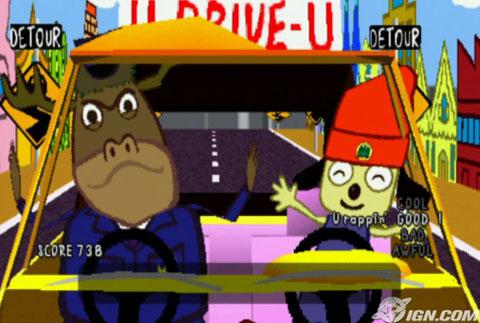 Still, Parappa’s charming original gameplay left an indelible mark on the games world, and although there’s actually very little to the game itself (it’s almost like one mini-game off Bishi Bashi Special in that respect), the sheer volume of content and entertainment contained within, combined with a supremely evil preciseness on the beat makes this game enough of a challenge and experience to make it worth shelling out for. Any way you look at it, this game is one you should try and play through at least once, if only to hear the entirety of the soundtrack.
Still, Parappa’s charming original gameplay left an indelible mark on the games world, and although there’s actually very little to the game itself (it’s almost like one mini-game off Bishi Bashi Special in that respect), the sheer volume of content and entertainment contained within, combined with a supremely evil preciseness on the beat makes this game enough of a challenge and experience to make it worth shelling out for. Any way you look at it, this game is one you should try and play through at least once, if only to hear the entirety of the soundtrack.
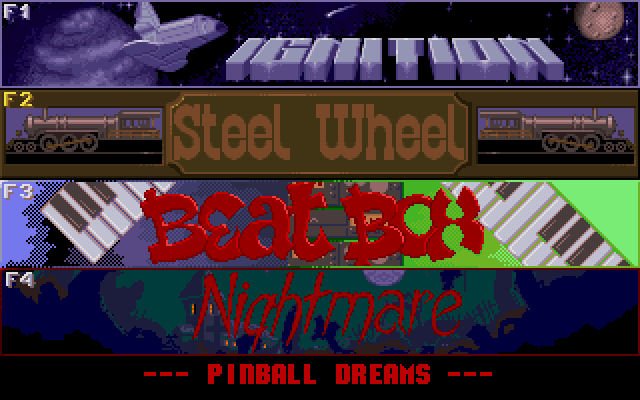
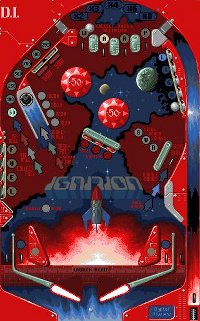 Bearing in mind, I've never been really into Pinball machines in the arcades, I very rarely left the realms of video games, but occasionally I have been tempted to give them a go. But this game showed me a little of what I was missing... Of course, when you load a game like this up, and you see the four tables available, you invariably start with number 1.
Bearing in mind, I've never been really into Pinball machines in the arcades, I very rarely left the realms of video games, but occasionally I have been tempted to give them a go. But this game showed me a little of what I was missing... Of course, when you load a game like this up, and you see the four tables available, you invariably start with number 1.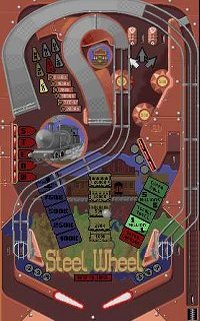 Table number 1 is a sci-fi themed table called "Ignition". Possibly the weakest moment of the entire series, I still haven't played this table much. I think the main problem with it is the big open space in the middle, all the targets and ramps are at the side, but the ball physics and the gameplay remained solid, and the competition between me, my father, and all the rest of my family began.
Table number 1 is a sci-fi themed table called "Ignition". Possibly the weakest moment of the entire series, I still haven't played this table much. I think the main problem with it is the big open space in the middle, all the targets and ramps are at the side, but the ball physics and the gameplay remained solid, and the competition between me, my father, and all the rest of my family began.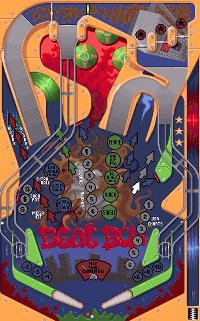 The table that would ultimately begin the true obsession with beating each other's scores would be table 4, "Nightmare". The combination of superb table design, multiple features and bonuses, superb music and perfectly placed targets resulted in a tussle for the number 1 spot in the high score table. Stupidly high scores were possible given luck and skill, but every single score you could set is theoretically beatable!
The table that would ultimately begin the true obsession with beating each other's scores would be table 4, "Nightmare". The combination of superb table design, multiple features and bonuses, superb music and perfectly placed targets resulted in a tussle for the number 1 spot in the high score table. Stupidly high scores were possible given luck and skill, but every single score you could set is theoretically beatable!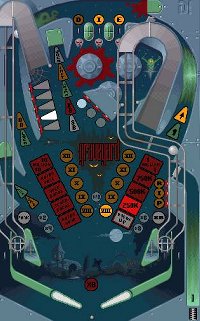
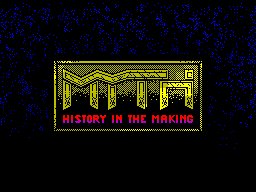
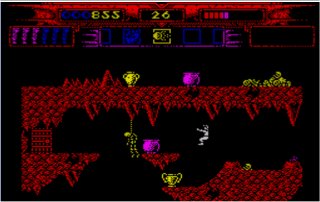 Basically, the slightly irrelevant plot goes along the lines of “Student with passion for myths gets hand-picked by the Gods to combat evil dark power, odds stacked against him etc.” Yes, the plot is irrelevant, as the game itself is superb from start to finish, and really doesn’t need it, the few hints in the instruction manual are enough to see you through without giving everything away.
Basically, the slightly irrelevant plot goes along the lines of “Student with passion for myths gets hand-picked by the Gods to combat evil dark power, odds stacked against him etc.” Yes, the plot is irrelevant, as the game itself is superb from start to finish, and really doesn’t need it, the few hints in the instruction manual are enough to see you through without giving everything away.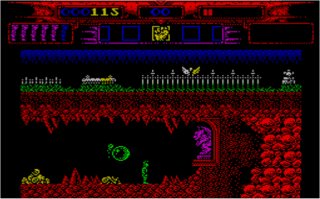 Anyway, you begin your quest plunged into the depths of hell, with several puzzles to solve and lots to do for starters. First off, the super smooth animation strikes you as your character runs along, jumping around, punching and kicking, with objective number one appearing to be to obtain some fireballs with which to bring down the essential teleport balls. These fireballs also make eradication of the nasty skeletons much easier than punching them. Fireballs, immunity and other artifacts will be found inside various chests and pots littered around, a couple of swift kicks will burst them open, and away you go.
Anyway, you begin your quest plunged into the depths of hell, with several puzzles to solve and lots to do for starters. First off, the super smooth animation strikes you as your character runs along, jumping around, punching and kicking, with objective number one appearing to be to obtain some fireballs with which to bring down the essential teleport balls. These fireballs also make eradication of the nasty skeletons much easier than punching them. Fireballs, immunity and other artifacts will be found inside various chests and pots littered around, a couple of swift kicks will burst them open, and away you go.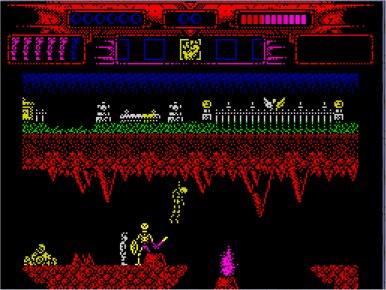 That’s just level 1… As you travel on your journey you must face Medusa, Vikings, Ogres, Odin, Mummies and a whole host of booby traps inside a pyramid, and with a limited number of lives available, you’ve certainly got your work cut out. But it’s all presented in glorious multi-colour, and although the final battle is a bit of a disappointment (it’s far too easy, the trials of the Pyramid prior to this are some of the finest puzzles and traps to negotiate in any game EVER) you’ll certainly feel a sense of achievement when you do manage to save Zeus and his chums from whatever Dameron was trying to achieve.
That’s just level 1… As you travel on your journey you must face Medusa, Vikings, Ogres, Odin, Mummies and a whole host of booby traps inside a pyramid, and with a limited number of lives available, you’ve certainly got your work cut out. But it’s all presented in glorious multi-colour, and although the final battle is a bit of a disappointment (it’s far too easy, the trials of the Pyramid prior to this are some of the finest puzzles and traps to negotiate in any game EVER) you’ll certainly feel a sense of achievement when you do manage to save Zeus and his chums from whatever Dameron was trying to achieve.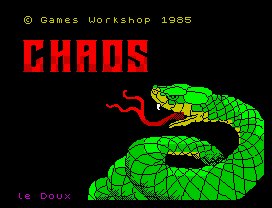
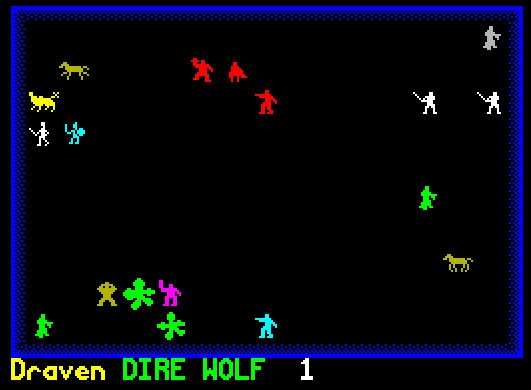
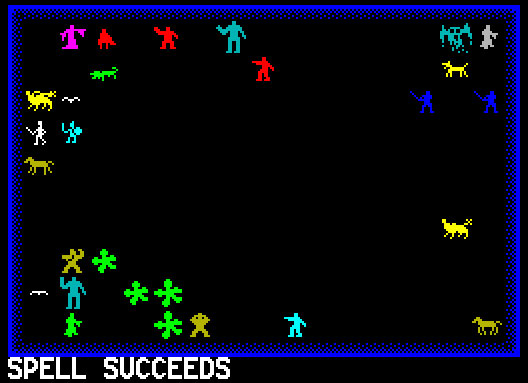
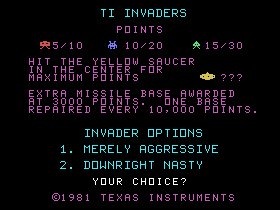
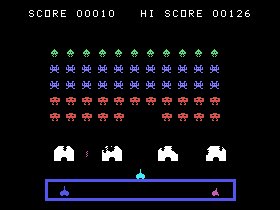 TI Invaders is, in my opinion, by far and away the best version of Space Invaders up until the franchise was truly revisited in 1991.
TI Invaders is, in my opinion, by far and away the best version of Space Invaders up until the franchise was truly revisited in 1991. 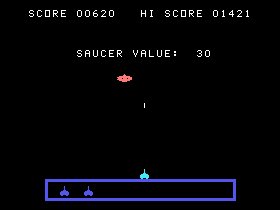 The enemies begin as large red aliens, and progress to smaller and smaller sizes, including some balls that actually disappear save for two pixels that stay visible. Occasionally, a yellow UFO travels across the top of the screen, awarding you a bonus that varies according to where you hit it… hit it dead centre for maximum score!
The enemies begin as large red aliens, and progress to smaller and smaller sizes, including some balls that actually disappear save for two pixels that stay visible. Occasionally, a yellow UFO travels across the top of the screen, awarding you a bonus that varies according to where you hit it… hit it dead centre for maximum score!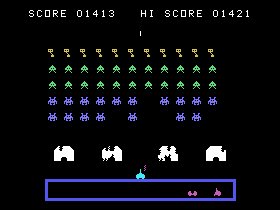 Yep, the game had the simplicity of the Space Invaders we all know and love, the perfect difficulty curve, and, above all, sheer playability. If you haven’t already played this, whether emulated or on the real McCoy, then you’ve missed out, big style.
Yep, the game had the simplicity of the Space Invaders we all know and love, the perfect difficulty curve, and, above all, sheer playability. If you haven’t already played this, whether emulated or on the real McCoy, then you’ve missed out, big style. 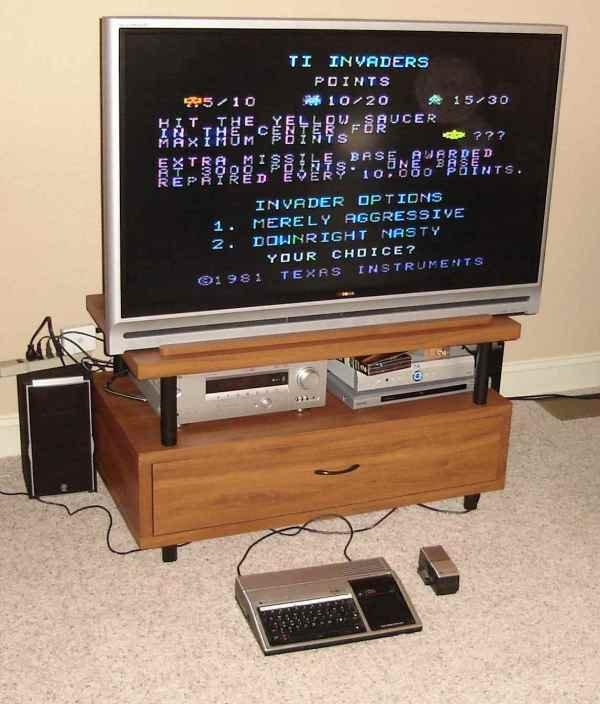

 So, let's begin. Get past the "no-frills" title screen (It just says "Parsec", basically. In plain mono-spaced text, no less) and we're hurtling across space in our natty little space ship. You can fly around a little, even crash, just get used to the handling, the game doesn't start until you press fire.
So, let's begin. Get past the "no-frills" title screen (It just says "Parsec", basically. In plain mono-spaced text, no less) and we're hurtling across space in our natty little space ship. You can fly around a little, even crash, just get used to the handling, the game doesn't start until you press fire. On the first level, these beasties take one shot to die. On level 2, they take 2. And so on, until level 4, after which they just come faster instead.
On the first level, these beasties take one shot to die. On level 2, they take 2. And so on, until level 4, after which they just come faster instead. Finally, you face an Asteroid belt, and must destroy a certain number of rocks to begin the next level, where we start all over again.
Finally, you face an Asteroid belt, and must destroy a certain number of rocks to begin the next level, where we start all over again.
 Thankfully, you do have 3 speeds of movement. Known as "Lifts", Lift 1 is the one you'll use for the refuelling tunnels. Lift 2 is medium speed (I never used this, EVER) and Lift 3 is full speed, what you'll be using for the majority of the game.
Thankfully, you do have 3 speeds of movement. Known as "Lifts", Lift 1 is the one you'll use for the refuelling tunnels. Lift 2 is medium speed (I never used this, EVER) and Lift 3 is full speed, what you'll be using for the majority of the game. Also, your laser can only be fired for so long before it overheats, destroying you. On Level 1, this is about 6 seconds of continuous fire. From about level 10, one tap on the fire button will start your ship flashing, the warning signal for an imminent overheat.
Also, your laser can only be fired for so long before it overheats, destroying you. On Level 1, this is about 6 seconds of continuous fire. From about level 10, one tap on the fire button will start your ship flashing, the warning signal for an imminent overheat.